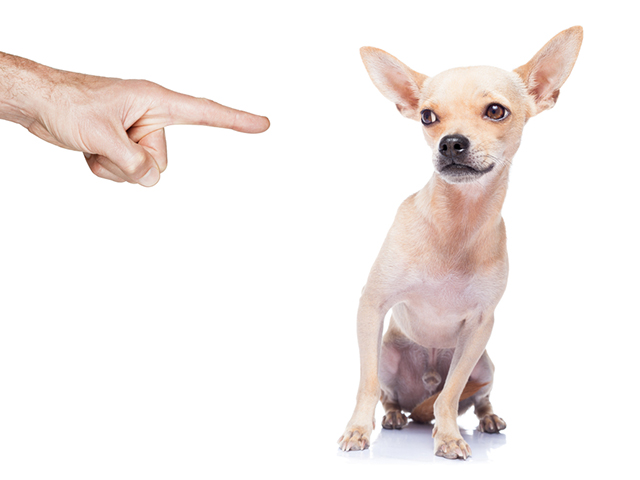Did you know that dogs can smell your emotional state and it alters their mood?
Somebody told me the other day that they participated in a lecture delivered by a clinical psychologist about how to cure a person’s fear of dogs, its called cynophobia. During the question period that followed, she continued, a person in the audience asked a question: “Isn’t treating a fear of dogs complicated by the phobic person’s reaction to dogs? It’s my understanding that dogs can ‘smell fear’ on a person, and the scent triggers an aggressive response in the dog. If so, the individual’s phobia would be strengthened because their fearful scent would generate a hostile response in any dog they encountered.”
They psychologist responded by noting that she had also often heard of dogs detecting and responding to the emotional scent produced by people, however, she knew of no direct data. As far as she could tell, it might just be a popular myth.
There is a lot of evidence which suggests that dogs are good at reading human emotions. For example, dogs can read the facial expressions of people. Research has shown that they respond differently to happy versus angry facial expressions, not only from live people, but also from photographs. Dogs do not simply read these facial expressions but react, changing their responses to individuals and the things in their environment based on these expressions. Thus an angry glare that their owner directs toward someone will cause the dog to avoid the person in the future.
There is also evidence that dogs can read our tone of voice and extract our emotional state from that. If for instance, their owner looks at something and says something like, “Wow! That is really nice!” in a happy tone of voice, the dog is much more likely to approach that thing.
All of these studies, however, focused on a the dog recognizing visual and auditory cues for emotion transmitted by people; the contribution of a dog’s exquisite ability to recognize scent has only barely investigated in this regard. It makes sense to think that a person’s emotional state may alter how they might smell to a dog. This is because our emotions can trigger pheromones, which are biological chemicals that alter the composition of bodily fluids-such as our sweat, which then evaporates into the air around us. In essence then, we are moving in a localized cloud of smells which contains information about the emotions that we are currently experiencing.
We are moving in a localized cloud of smells which contains information about the emotions that we are currently experiencing.
There was one, somewhat odd, piece of research, which suggests that dog do process and recognize some emotional smells. This study was conducted by a team of researchers headed by researchers in Italy. In that investigation dogs were presented with a small vial which released minute amounts of a chemical smell. The vial was small enough so that if the dog wanted to sniff at it he could use only one nostril at a time. Some of the smells tested were neutral (such as the scent of lemon), while others were positive (dog kibble) however one of the vials contained adrenaline, a stress hormone present in pheromones when an individual is suffering from fear or anxiety. What these researchers found was that the dogs were much more likely to use their right nostril when sniffing the adrenaline. I know that some readers are now thinking, “So what?” but bear with me; this is an important finding for two reasons; First, that the dogs respond differently when sniffing adrenaline shows that the dogs can recognize the scent of a stress hormone. The second reason that this particular behavior makes sense is because the right nostril leads directly to the right hemisphere of the brain which is believed to be more specialized for processing emotional stimuli than the left hemisphere of the brain.
smells. This study was conducted by a team of researchers headed by researchers in Italy. In that investigation dogs were presented with a small vial which released minute amounts of a chemical smell. The vial was small enough so that if the dog wanted to sniff at it he could use only one nostril at a time. Some of the smells tested were neutral (such as the scent of lemon), while others were positive (dog kibble) however one of the vials contained adrenaline, a stress hormone present in pheromones when an individual is suffering from fear or anxiety. What these researchers found was that the dogs were much more likely to use their right nostril when sniffing the adrenaline. I know that some readers are now thinking, “So what?” but bear with me; this is an important finding for two reasons; First, that the dogs respond differently when sniffing adrenaline shows that the dogs can recognize the scent of a stress hormone. The second reason that this particular behavior makes sense is because the right nostril leads directly to the right hemisphere of the brain which is believed to be more specialized for processing emotional stimuli than the left hemisphere of the brain.
The question about whether dogs can smell positive versus negative emotional states, and specifically, how dogs might behaviorally respond to such scents has recently been addressed by another Italian neurobiologist at the University of Naples in Italy. The results were published in the journal Animal Cognition. The researchers say that their study “was designed to examine a new perspective, namely the transmission of emotional states from humans to dogs via human body odors produced during happiness and fear.” They were also very concerned about testing the popular notion that if dogs smell fear on a person it is likely to trigger an aggressive response from the dog toward the fearful individual.
The first step in a piece of research like this involves gathering the scent stimuli. The “odor donors” came from a laboratory in Lisbon. A number of people were shown a 25 minute video designed to induce the emotional states of either fear or happiness. Sweat samples were then collected on pads, placed in a sealed packets, frozen, and returned to the behavioral lab in Naples.
The test subjects were a sample of 40 Labrador and Golden Retrievers who had been fitted out with mobile heart rate monitors. Each dog was placed in a small room with his owner and a stranger (who was not one of the odor donors). Both the dog’s owner and the stranger sat reading magazines and did not specifically interact with the dog. Meanwhile an apparatus was used to disperse scent from either the “happy sweat” or the “fearful sweat,” while in a control condition no odor was released.

The dog’s behaviors and physiological responses did change as a result of their exposure to emotionally tinged sweat odors. The dogs that had been exposed to the fear-related smells showed more behavioral signs of stress than those exposed to the happy or neutral smells. These dogs seem to also seek reassurance through contact with their owners. In addition, when the fear smells was in the room the dogs’ heart rates were considerably higher that they were in either the happy or neutral conditions.
However, while the dogs were clearly responding emotionally to the scent of fear, their response seemed to mirror the emotion that they were detecting in that they acted in fearful manner themselves. There was no evidence of aggression toward either the owner, the stranger, or the scent dispensing apparatus.
The dogs also seemed to recognize the odor associated with a happy emotion. Exposure to that scent did not produce stress signs or an elevated heart rate, but rather the dogs now tended to show more interest and approach behavior towards the stranger.
In an interview, the researcher summarized the results saying, “Thus our date, while supporting the dog’s ability to perceive human emotional chemo-messages, do not prove that they trigger attack.” As for the suggestion that someone who is afraid of dogs is more likely to be the recipient of hostile responses when they meet dogs, he suggested, “When people are afraid of dogs, they also assume unusual postures and look the dog in the eyes. This behavior can be interpreted by the dog as a threat.”
Bottom line?<h/4> Dogs do seem to be able to smell human’s emotional state and look to their owners to model their response. As for those fearful of dogs? The scent of your fear alone is unlikely to provoke a response, though our unusual fear-driven behavior might well make a dog uncomfortable.
Jolly Football
Enourages Healthy Excercise
Made in the USA
Undeflatable jollyflex material!
Floats for water based fun!












